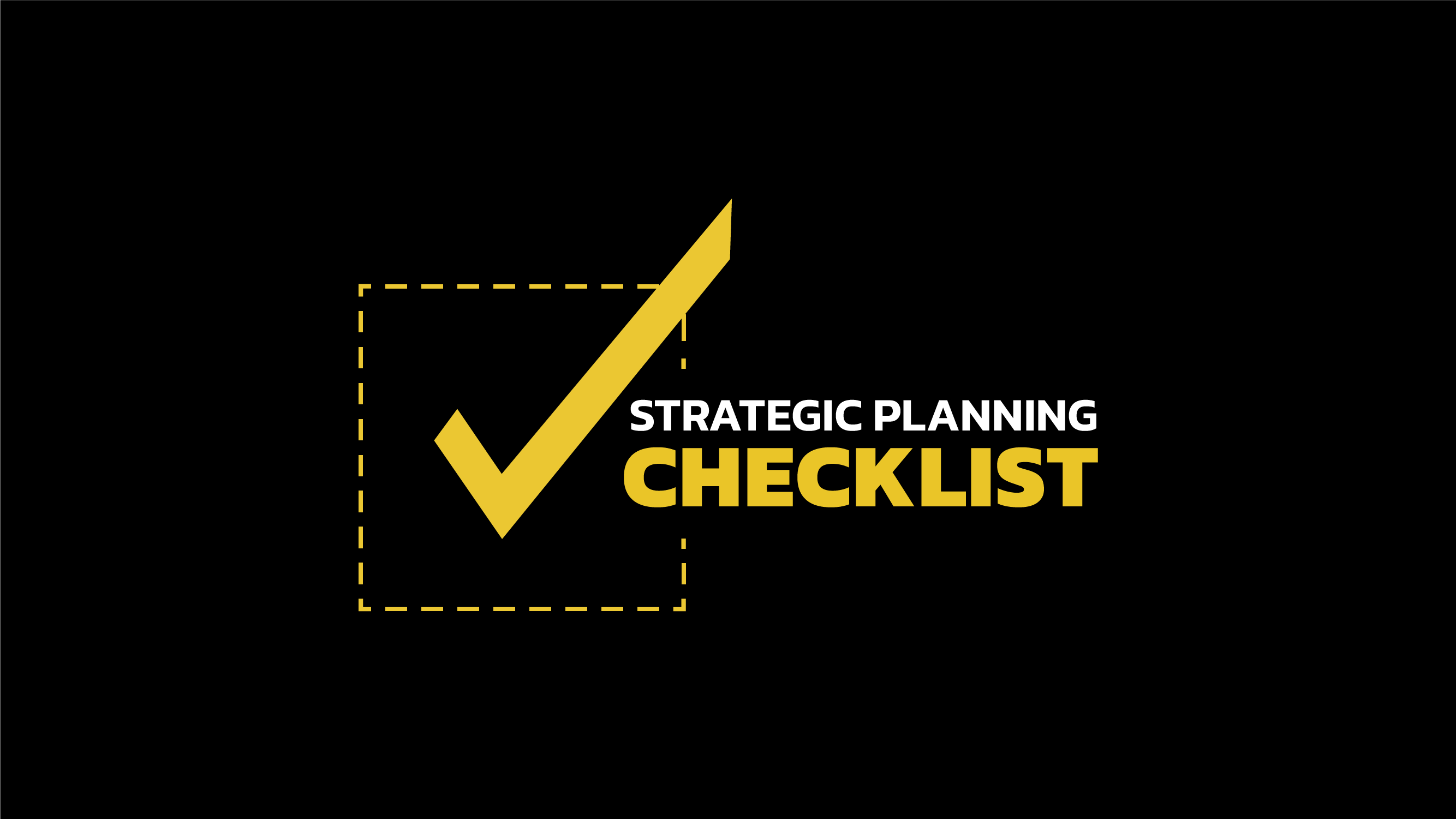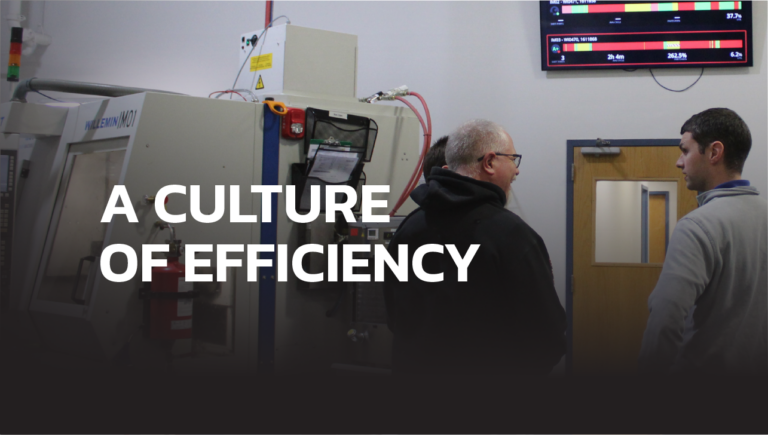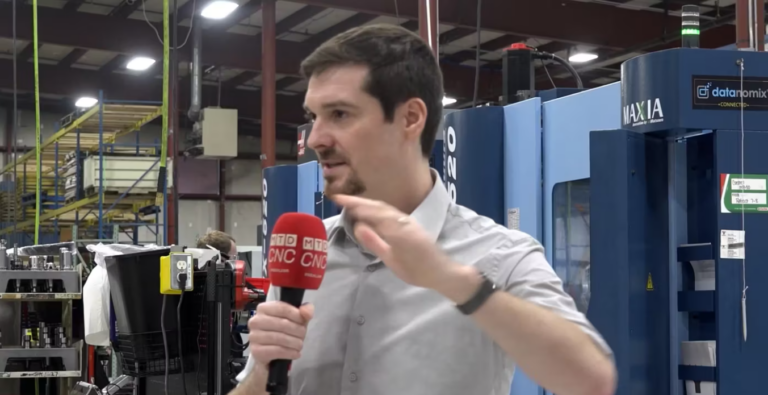Strategic Planning Checklist for Precision Manufacturers Who Want to Make More Money
Do you want to grow your business? Then, you need a plan.
“If You Always Do What You’ve Always Done,
You’ll Always Get What You’ve Always Got.” – Henry Ford
If it’s been awhile since you did a formal strategic plan, we’ve compiled a list of questions to get the ball rolling. The text below goes into lots of detail and there are tips for people new to the whole process. After reading, you can download a streamlined and bulleted checklist of the questions and action items. So grab the beverage of your choice, settle in and ask yourself (and your team) the following questions:
Market Analysis
- External
- How are the industries we serve doing globally and locally?
- What are the latest trends in those industries that will drive the most growth in the coming year?
- Internal
- What’s our current backlog? Is that high/low for us?
- Do we have a good sales pipeline? What is it for the next 3 months? 6 months?
- Are current customers reordering at their usual rate? Less? More?
- How are we trending on revenue and profitability for the last 4 quarters?
How to Tip:
Not sure how to start? Google “What is the outlook for the *Automotive* industry in 2024?” and a bunch of analyst’s summaries will pop up—read a few of the executive summaries to see if they agree. You can also add geographies or regions to your search to see if there is any data out there on that. If your industries are growing at 3-5% then planning to grow by 10% will need one hell of a plan to either crush the competition or move into other markets. Keeping at or slightly below the predicted growth rate for your major industries is a good target unless you are doing something very different—like adding a new production monitoring system, buying more machines, adding a second shift, hiring more salespeople…
If you want some snazzy charts for a presentation you have to give – then click the “images” bubble under the main search bar to see associated graphics. If you see one you like, hit “Ctrl” and “+” several times to make your screen bigger and then use the snipping tool to grab a screenshot big enough to use in a slide. Be sure to credit the author! Hitting “Ctrl and “-” several times will shrink your screen back to normal.
BTW: It is rarely worth buying the report. Getting an idea from it is great though.
- Your Competition
- Who & where are they?
- Local? Global? Regional?
- How are we the same/different? (capabilities, machines, certifications)
- How’s the competition doing? (it might be hard to find out, but look to see if they are hiring, advertising, going to shows, spending money on a website, etc.)
- Who & where are they?
How to Tip:
Not sure who your competitors are? Google what you think your customers would type in to find you. For example: “Screw manufacturers for automotive engines” or “Leading automotive fastener manufacturers”. Look for industry organizations and see who belongs to them. Check exhibitors at industry trade shows. Look for ads in industry publications. Search Thomas Register. Look on LinkedIn. Ask your sales folks who they usually hear about from prospects. Ask your customers who they get quotes from or who calls on them.
Customer Insights
- Who are our top customers?
- What percentage of revenue is each customer?
- Are we vulnerable if they walk away?
- Is it time to “fire” some customers? (Consistently losing $ keeps you from more profitable work.)
- Are our customers too painful to work with?
- Are there other companies that “look like” our current customers?
- What percentage of revenue is each customer?
- What types of products do our customers frequently request?
- Are there other industries that use similar products?
- Who are our customers’ competitors?
- How happy are our customers?
- What are we doing to improve customer satisfaction?
How to Tip:
If you have never done a customer satisfaction survey, at least do a Net Promoter Score (NPS) survey, which asks just one question: “Would you recommend us to a colleague?”. It is a quick way to give you a baseline of customer satisfaction. Many companies have free software you can use—a popular one is Survey Monkey. Do the survey every year! You can follow up with unsatisfied people to understand why they were unhappy and make a strategic plan to improve if required.
Capacity & Efficiency
- How efficiently are our machines and equipment being utilized? What’s the utilization rate of every machine?
- Do we have the capacity to add more jobs without having to hire more people or buy more machines?
- How are we measuring this?
- What are bottlenecks or inefficiencies in our production process?
- How are we measuring this?
- Can we optimize our production schedules to increase throughput?
- Should we need to invest in new equipment or technology to improve productivity?
- Do we have the capacity to add more jobs without having to hire more people or buy more machines?
How to Tip:
The best way to gauge capacity and utilization of your machines is with real-time production monitoring software—aka machine monitoring. Everything else is guessing. The leader in the space is Datanomix. Datanomix does real-time monitoring of machines directly from the controller—so no operator input is required. Really! Customers start off with Three Quick Wins that have a double-digit impact on utilization rates.
Pricing & Profitability
- What is our shop rate?
- EBITA Growth Systems use the following equation:
(Labor Rate + Machine Rate + Overhead Rate) x (1 + Profit %) = Shop Rate
- EBITA Growth Systems use the following equation:
- Are our pricing strategies competitive in the market?
- What percentage of the bids do we win?
- Are we making money on the parts we win?
- How and when do we know?
- Can we adjust pricing to increase margins without losing customers?
- How can we measure this?
- What is the profitability of each type of machining service we offer?
- Which parts are the winners, losers, and where are we leaving money on the table?
How to Tip:
Using Datanomix can tell you in real time if you are making money on a part. You can see exactly how much touch time and cutting time each part takes. It’s like having a time study for every part, on every machine, every day. Historical data can show you how much money you made last time you made a certain part to guide current pricing strategies.
Marketing & Sales
- What is our current marketing strategy?
- How effective is it?
- How do we measure success? Number of followers? Clicks, pageviews, email opens…
- Are we utilizing digital marketing, social media, and online presence effectively? (Check out Ricaurte Precision and their social presence for inspiration.)
- Do we have a sales team, and are they adequately trained and motivated?
- How are we compensating them? Is that typical?
- Can we expand our customer base through networking and partnerships?
How to Tip:
Launch targeted marketing campaigns showcasing your expertise in your chosen industries. Highlight customer stories and use hard numbers. Ask current customers where they go for their information—Trade shows, LinkedIn, Industry Pubs, social media, Google, etc. Then, show up in those places. Better to do a few things really well—then a lot of things badly. If you are just starting out in social, pick one channel—usually LinkedIn, Facebook, or YouTube. Create a memorable look and feel that will appeal to a broad base of your customers. Branding matters!
Quality Control
- Are there any recurring quality issues that need to be addressed?
- How do we track quality issues?
- How do we track if we fixed the quality issues?
- Can/should we implement quality certifications to attract more customers? (e.g., AS9100 for aerospace or ISO 13485 for medical devices.)
- Have we been disqualified from quotes for not having certifications?
- Is it a way to differentiate ourselves?
Diversification & Specialization
- Should we consider going after other industries?
- What industries are “adjacent” to the ones we already serve?
- Do current customers span industries? Can we leverage that?
- Are there specialized machining services that we are good at where we can charge premium prices?
- Automotive and agriculture don’t support high-margin parts—medical devices and aerospace do.
- What are the potential risks and rewards of expanding into other markets?
- Finding new customers and building a reputation takes time.
Financial Management
- What is our current cash flow situation, and how can we improve it?
- How good are we at collecting money on time?
- Do we have a budget and financial projections to guide our revenue growth efforts?
- How accurate have our projections been in the past?
- Can we secure additional financing or funding for expansion if needed?
- Do the Local, State or Federal governments have any grants/low interest loans, etc. available for manufacturers?
Employee Training & Development
- Do our employees have the necessary skills?
- How do we know when someone needs more training?
- Are there opportunities for additional training or skill development?
- Does the local, state or federal government offer any?
- How can we improve employee retention and morale to ensure consistent quality and productivity?
- How do we measure employee performance?
- What do we do to reward employee performance?
- Is the company’s performance tied to employee incentives?
How to Tip:
Contact your local Economic Development Office to see if they have any programs to help you. They often know about grants from the state, etc. You can also talk to local Technical High Schools, Community Colleges, or trade schools to see what they offer. Building relationships with these organizations is a great way to stay top of mind when they have good candidates or funding. If you have Datanomix, you can use the system to look at machines that are consistently underperforming. This will help identify operators who can benefit from additional training or highlight multi-machine operators who are stretched too thin.
Technology & Innovation
- Are there technological advancements in machining that we can leverage?
- Automation and lights-out manufacturing can dramatically increase your throughput rate – letting you beat out competition for larger jobs.
- What is the ROI on those investments?
- Automation and lights-out manufacturing can dramatically increase your throughput rate – letting you beat out competition for larger jobs.
- How can we improve our efficiency right now with the people and machines we already have?
- How can we stay up-to-date with the latest advancements in the industry?
- Are we active members of local/regional/national associations?
How to Tip:
If you have Datanomix Production Monitoring, you can access real-time and historical data for how every machine and part performs against target. It is also invaluable if you have a palleted systems because it is the only monitoring solution that can read the step-by-step activities within palletized machines. This means you have visibility into individual part numbers and operations so you can see per-part cycle time and performance. Other monitoring systems see palletized machines as a single machine running a single operation. For lights-out manufacturing, Datanomix can send notifications to designated people as soon as a machine goes down—telling them why it’s down.
By asking and answering these questions, you can develop a strategic plan that will make you more money now and pave the way to long-term growth. Having accurate data about production performance is critical in making the best decisions.
Note: Most examples use automotive as the industry served.






